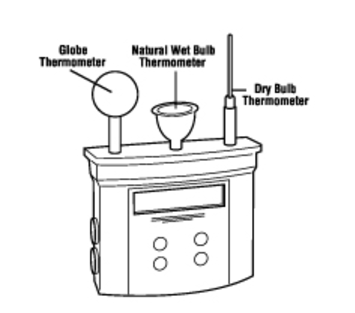Minnesota Administrative Rules

Minnesota's rule 5205.0110 sets clear standards to keep indoor workplaces safe and comfortable. These rules cover how air should flow, how hot or cold it can get, and other related conditions, helping create healthier environments for employees.
Air Flow
Workplaces need proper airflow to keep employees safe. Employers must bring in outdoor air at a rate of 15 cubic feet per minute per person. This air should be delivered in a way that avoids blasting workers with air speeds over 200 feet per minute, unless the Department of Labor and Industry allows higher speeds in special cases.
Heat and Heat Stress
Heat stress happens when the body gets too hot because of both body heat and heat from the environment. It can happen in hot places like foundries, kitchens, or laundries all year long, or during very hot days in the summer in almost any job.
In Minnesota, heat stress can be a big problem because the weather changes a lot. In the summer, it can be very hot one day and much cooler the next, making it hard for people to get used to the heat. This increases the risk of heat-related illnesses.
Heat stress can cause problems like:
- Heat fatigue
- Heat stroke
It can also make workers less productive and more likely to get hurt. Minnesota’s heat rules help keep workers safe from these dangers.
To prevent heat stress, two key things help:
- Hydration
- Acclimatization (getting used to the heat)
Other methods, like using fans or adjusting work schedules, also reduce heat exposure.

Heat Safety Levels
Workplaces use the WBGT (Wet Bulb Globe Temperature Index) to measure how heat feels. WBGT looks at air temperature, humidity, wind, and heat from the sun or machines.

WBGT = 0.7 Tnwb + 0.3 Tg, where:
- Tnwb is the natural wet-bulb temperature (measured with a wet wick on the sensor).
- Tg is the globe temperature (measured in a black globe to capture radiant heat).
Work intensity also affects heat safety standards:
- Hard work (like lifting heavy things): Max 77°F WBGT (25°C)
- Medium work (like walking while carrying things): Max 80°F WBGT (26.7°C)
- Light work (like desk jobs): Max 86°F WBGT (30°C)
Workers exposed to heat must also get training on recognizing and handling heat risks.
Cold
Workplaces must stay warm enough to prevent cold-related health problems:
- Heavy work needs a minimum indoor temperature of 60°F (15.6°C)
- Medium or light work: At least 65°F (18.3°C)
If these temperatures can’t be reached because of certain tasks, exceptions can be made.

Recirculated Air
Air that comes from exhaust systems handling hazardous materials cannot be reused unless written approval is given by the Department of Labor and Industry. This ensures harmful substances don’t return to the workspace, keeping air quality safe.
Key Definitions
Indoor: Any enclosed space with walls, floors, and ceilings, including those with doors, windows, or other barriers.
Place of Employment: Any location where employees perform job tasks, as defined by Minnesota law.
Conclusion
Minnesota's indoor air and temperature rules are designed to keep workplaces safe and comfortable year-round. By ensuring proper ventilation, controlling temperatures, and maintaining air quality, employers can protect workers from heat and cold stress while creating healthier work environments. Staying compliant with these rules helps keep everyone safe, productive, and comfortable on the job.
For official documentation from Minnesota's Department of Labor and Industry see:
Book a Demo Today
Alternatively, get a free trial of the app
Want to try OK Alone? Click the button below and enter your details. It's free and no credit card is required.





